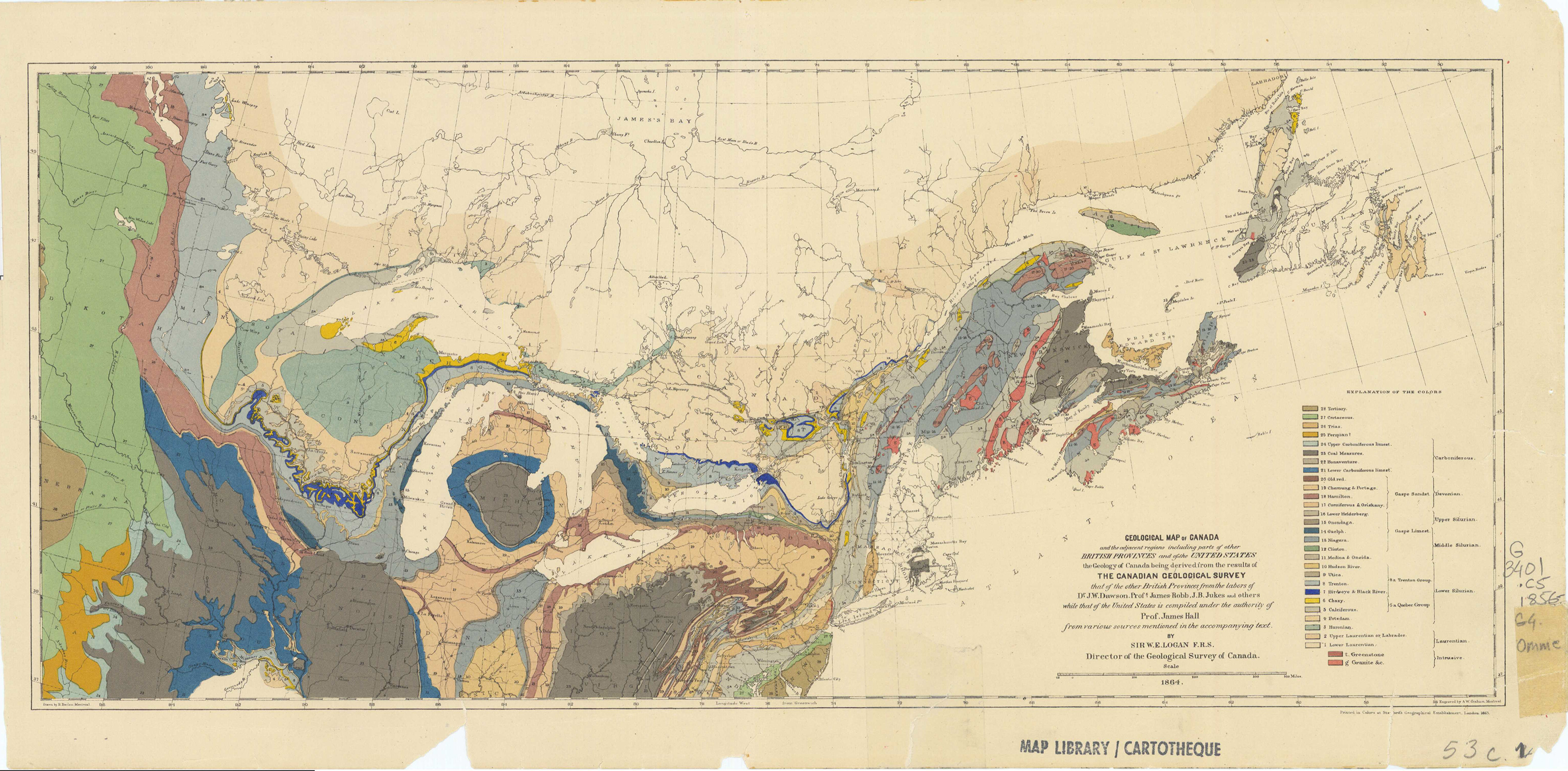Helen Reynolds Belyea, OC, FRSC, geologist (born 11 February 1913 in Saint John, NB; died 20 May 1986 in Calgary, AB). Helen Belyea was the second woman to work for the Geological Survey of Canada and the first female geologist to work in the field alongside male colleagues. She spent the majority of her career in Alberta after the discovery of oil in Leduc. She was a recognized authority on the Devonian geologic system in Western Canada.

Education and Early Career
Helen Reynolds Belyea was born 11 February 1913 in Saint John, New Brunswick. She earned both her Bachelor’s and Master’s degrees in geology at Dalhousie University in Nova Scotia. Belyea was the only woman in her class in 1936. At Dalhousie, she was president of the Dawson Geology Club. She continued her studies and received her PhD in geology from Northwestern University in Illinois, US, in 1939. Her dissertation, “The Geology of the Musquash Area, New Brunswick,” focused on maritime geology, but in her career Belyea would become an expert in the geology of Western Canada.
After receiving her PhD, Belyea worked briefly as a private high school teacher in Victoria and Toronto. During the Second World War, she joined the Women’s Royal Canadian Naval Service and worked at the Naval Service HQ in Ottawa. She obtained the rank of Lieutenant and was released from service in May 1945.
Career as a Geologist

Members of the Alberta Society of Petroleum Geologists on a field trip in the Bow Valley, Alberta, 1956. From left to right, seated: P.F. Moore, Karl Mygdal, Helen Belyea. From left to right, standing: C.H. Crickmay, R. Martin, R. de Wit, D.F. Stott, C.W. Hunt, D.J. McLaren, D.K. Norris.
In 1945, Helen Belyea joined the Geological Survey of Canada (GSC) as a technologist. The GSC was established in 1842 as a national agency for geoscientific information and research. Belyea was the second woman to work for the GSC, after Alice Wilson, who worked with the organization from 1909 to 1946. Belyea began her career with the GSC at their office in Ottawa.
In February 1947, oil was discovered in Leduc, located about 30 km south of Edmonton (see Striking Oil in Leduc: the Beginning of Alberta's Oil Boom). The discovery prompted Alberta’s post-war oil boom. In 1950, Belyea was transferred from the Ottawa office to Alberta. She became one of two geologists monitoring the oil discovery in Leduc. At that time, she was the only woman geologist to work in the field alongside male colleagues. She would remain so until the 1970s. In Leduc, Belyea studied rock fragments brought to the surface by oil drills. She used this information to map the geology of the area and help to predict where oil was likely to be found.
Based out of the Calgary GSC office, Belyea carried out both field and interpretive work and was the only woman to hold a senior scientific post. The oil discovered in Leduc had been found in the Devonian reef. This led Belyea to further study the Devonian system in Western Canada and she became an authority on the matter. The Devonian system is a geological period from the Paleozoic Era, dating roughly between 358 and 419 million years ago. The period is known for its abundance of primitive fishes, including those that grew legs to walk on land as early vertebrates. Belyea’s work studying the Devonian reefs helped map Alberta’s environment from more than 350 million years ago.
Publications

Helen Belyea and colleagues pose near Hummingbird Reef, Alberta, July 1955. From left to right: Pat Thornton, Imperial Oil librarian; Bill Kaufman, student geologist; Helen Belyea, Geological Survey of Canada; and Blake Brady, Geological Survey of Canada.
Throughout her career, Helen Belyea published over 30 papers, most of which were on the Devonian system. In 1958, she became the first woman to win the Barlow Memorial Medal from the Canadian Institute of Mining, Metallurgy and Petroleum for one of her papers. Her work developing a stratigraphic (the study of rock layers) framework of parts of the southern Northwest Territories was included in a volume of the Geological History of Western Canada. Her book The Story of the Mountains in Banff National Park (1960) was the first in a series of geological pamphlets created for the national park’s interpretation staff.
Later Life
In 1975, Helen Belyea retired from the Geological Survey of Canada after 30 years, although she would continue working with the Institute of Sedimentary and Petroleum Geology. Aside from her career, she was involved in organizations in Calgary, such as the Calgary Zoological Society and the Women’s League of the Calgary Philharmonic Society. Belyea’s interests included mountaineering, skiing and horseback riding. She died on 20 May 1986 in Calgary, Alberta.
Honours & Awards
- Barlow Memorial Medal, Canadian Institute of Mining, Metallurgy and Petroleum (1958)
- Fellow of Royal Society of Canada (1962)
- Honorary Doctor of Science, University of Windsor (1976)
- Honorary Member, Canadian Society of Petroleum Geologists (1976)
- Officer, Order of Canada (1976)
- Honorary Doctor of Laws, Dalhousie University (1977)

 Share on Facebook
Share on Facebook Share on X
Share on X Share by Email
Share by Email Share on Google Classroom
Share on Google Classroom



